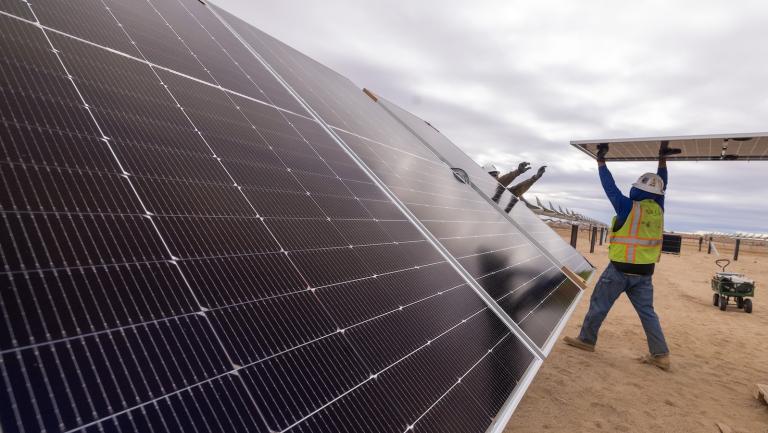 A major new report from the Center for American Progress (CAP) provides a detailed roadmap for avoiding catastrophic global warming and restoring our energy security, while maintaining economic development.
A major new report from the Center for American Progress (CAP) provides a detailed roadmap for avoiding catastrophic global warming and restoring our energy security, while maintaining economic development.
The report, “Capturing the Energy Opportunity: Creating a Low Carbon Economy,” is by CAP’s John Podesta, Kitt Batten, and Todd Stern. It is well worth reading, and I say that not because I am a senior fellow at CAP, but because the 88-page report lays out the most comprehensive set of plausible job-creating climate/energy policies I have seen.
The authors understand the scale of the problem:
The challenge we face is nothing short of the conversion of an economy sustained by high-carbon energy — putting both our national security and the health of our planet at serious risk — to one based on low-carbon, sustainable sources of energy. The scale of this undertaking is immense and its potential enormous.
The urgency of this issue demands a president willing to make the low-carbon energy challenge a top priority in the White House — a centerpiece not only of his or her energy policy but also of his or her economic program — to produce broad-based growth and sustain American economic leadership in the 21st century. This task is so encompassing it will demand that the incoming president in 2009 reorganize the mission and responsibility of all relevant government agencies — economic, national security, and environmental.
The report explores the crucial steps needed to meet the challenge:
- Create a green-house gas emissions cap-and-trade program
- Eliminate federal tax breaks and subsidies for gas and oil industries
- Increase vehicle fuel economy — 40 mpg by 2020, 55 mpg by 2030
- Increase production and availability of alternative low-carbon fuels
- 25% of our nation’s transportation fuels by 2025
- Reduce life-cycle emissions from transportation fuels by 10 percent by 2020
- Fifteen percent of fuel “pumps” (including dedicated electricity charging stations for plug-in hybrid vehicles) provide low-carbon alternative fuels in any county in the U.S. where 15 percent of vehicles can run on these alternative fuels.
- Invest in low-carbon mass transportation infrastructure
- Improve efficiency in energy generation, transmission, and consumption — 10 percent energy savings through efficiency upgrades by 2020
- Increase production of renewable electricity
- Use carbon capture-and-storage systems for carbon emissions from coal
- Create a White House National Energy Council
- Create an Energy Innovation Council
- Create an Energy Technology Corporation
- Create a Clean Energy Investment Authority
- Create a Clean Energy Jobs Corps
- Lead efforts to advance international global warming policies
Fortunately, while the challenge is great, the opportunity is greater — and not just the benefits of avoiding catastrophic global warming:
Taking such action is not just good for our environment. Actions like these can provide a powerful charge to the economy. Our vision of a low-carbon economy includes vigorous private and public research pushing the envelope on technologies that will not only stabilize emissions at livable levels during the next 50 years but also create the clean-powered world that our grandchildren and their children will see at the dawn of the next century. Developing, deploying, and building at this scale recalls other great economic transformations in America’s past, like the laying of our railroads and the construction of the interstate highway system. But in many ways our new challenge is even more complex since energy powers every part of the economy. Yet that’s exactly why these advancements will drive economic growth and American leadership in a competitive global economy well into the 21st century.
Do we need to wait for breakthrough technologies, as Bush, Gingrich, and Lomborg argue? Of course not (in fact, we can’t afford to delay any longer if we want to save a livable climate):
The good news is that the technology we need to begin the transformation to a low-carbon economy exists and the investment dollars are available if the policy ground rules are properly established. A great deal of investment and effort will be needed to make this vision real, but the hard work of ushering it in can become a powerful engine for growth, competitive advantage and jobs.
For the details on how we can take advantage of the energy opportunity, read the report here. A video summary is here. An online interview with Kit Batten on the report is here.
And this report is just one chapter in a much longer document, “Progressive Growth: Transforming America’s Economy through Clean Energy, Innovation, and Opportunity” — CAP’s economic strategy for the next administration, with a summary here.
This post was created for ClimateProgress.org, a project of the Center for American Progress Action Fund.


